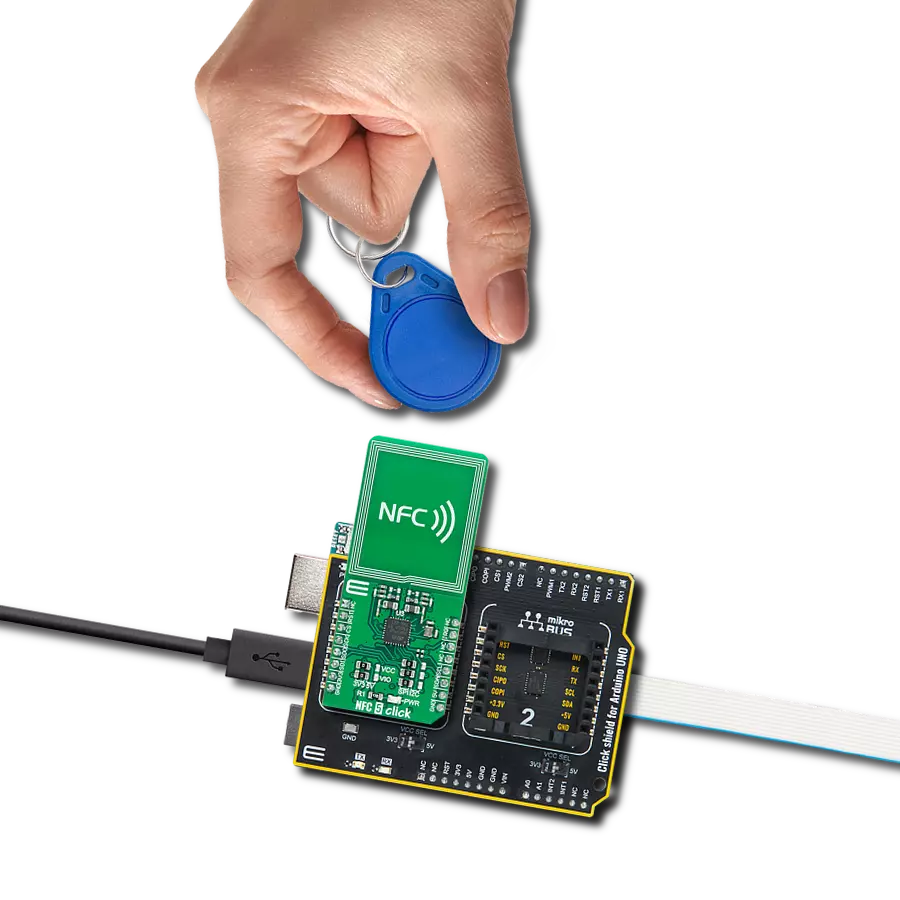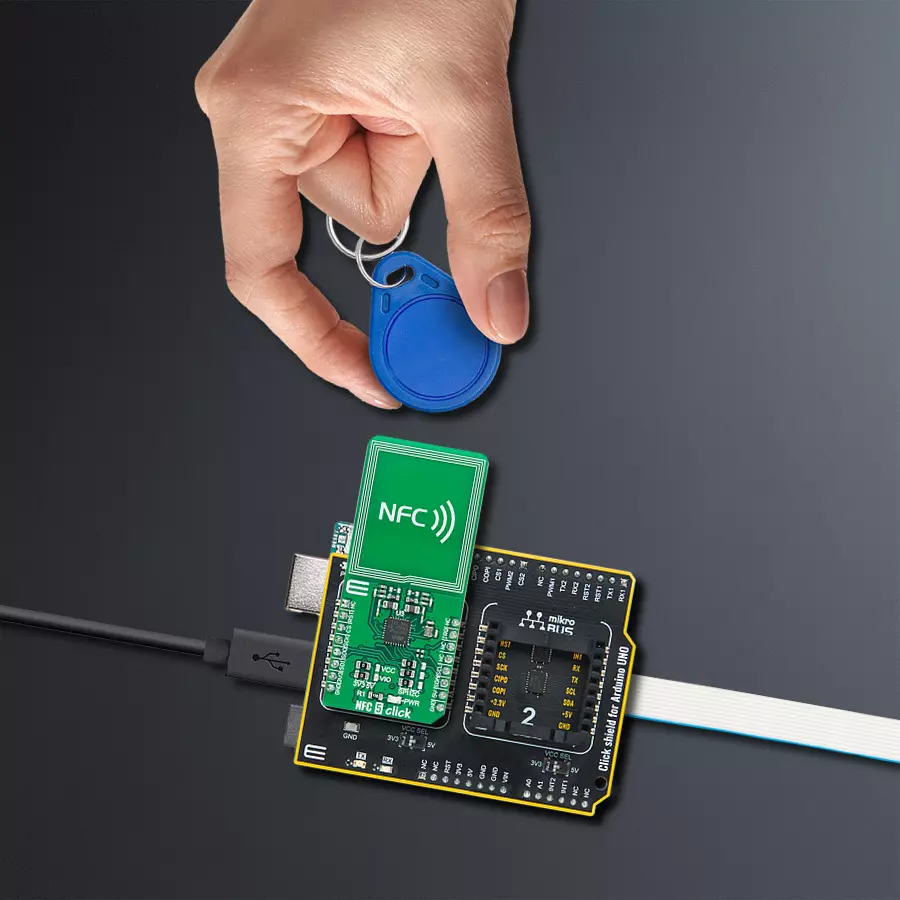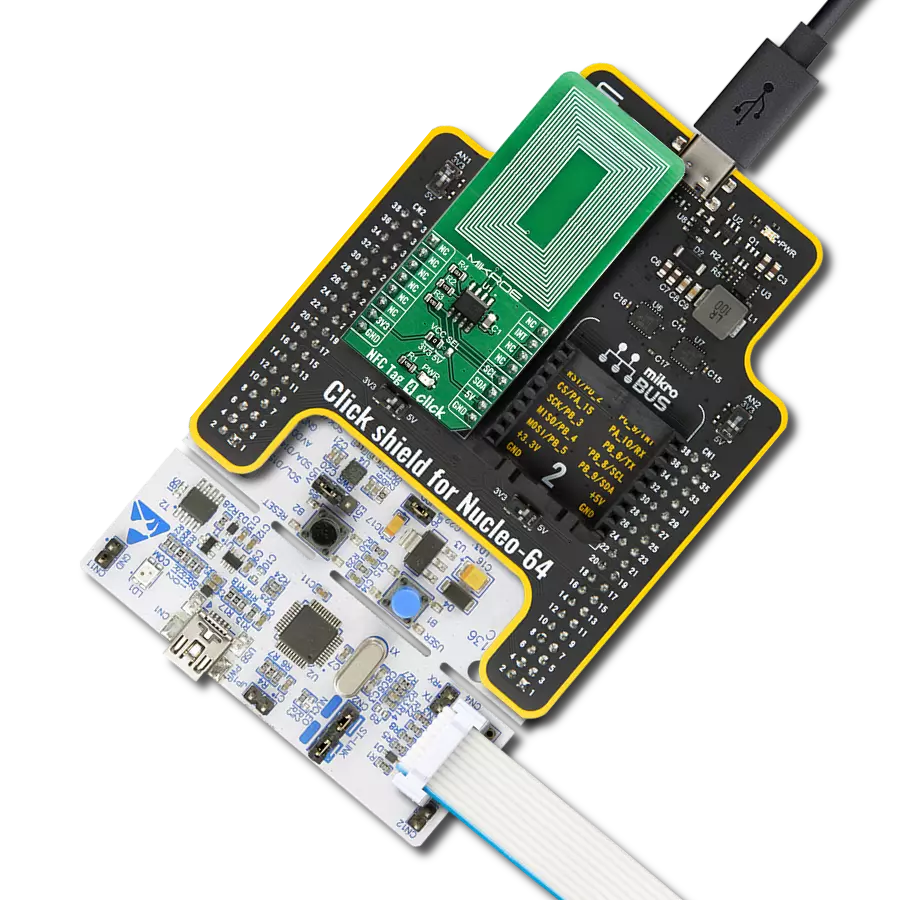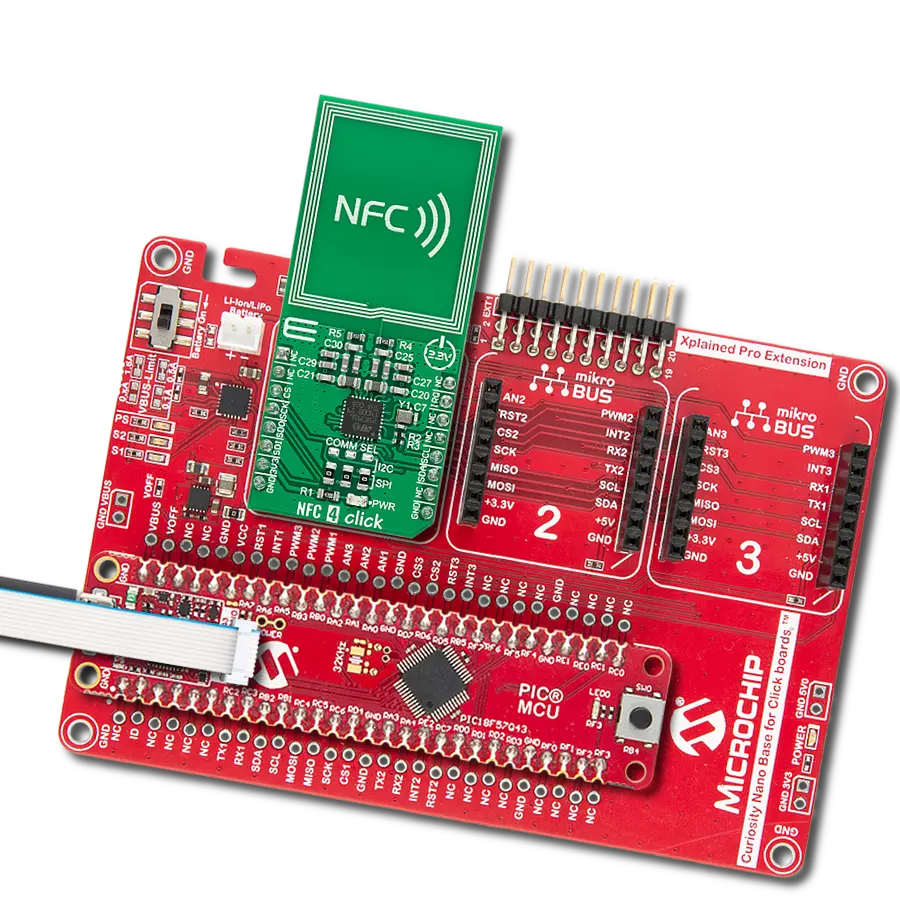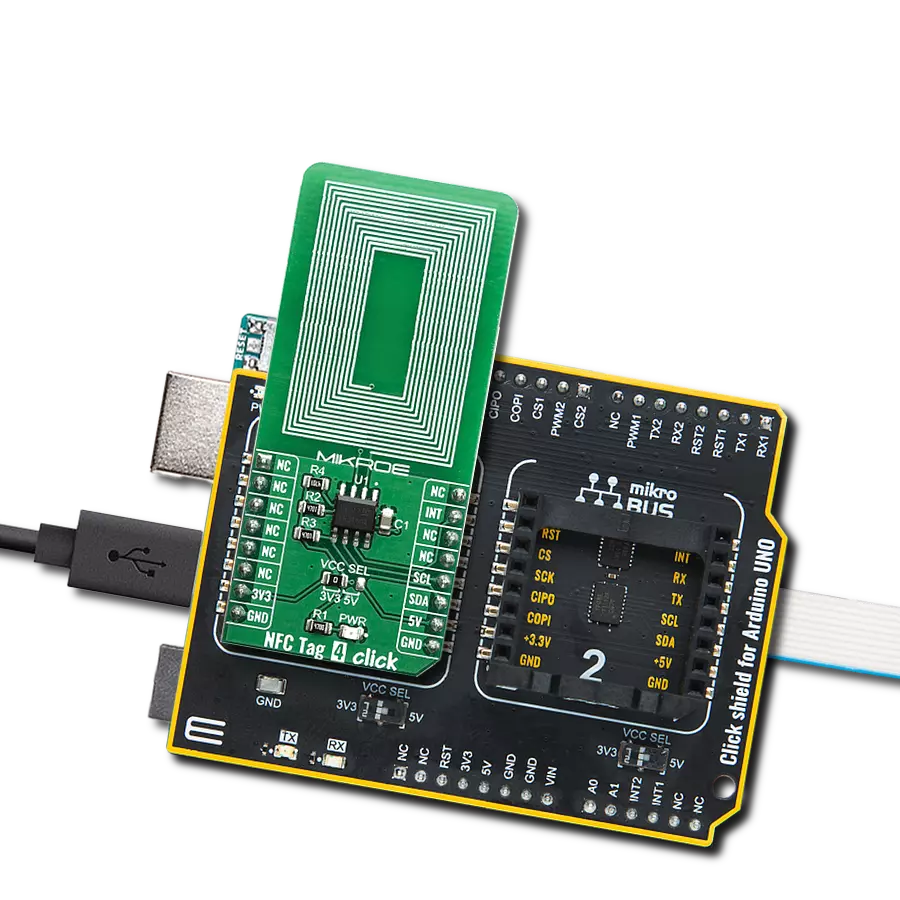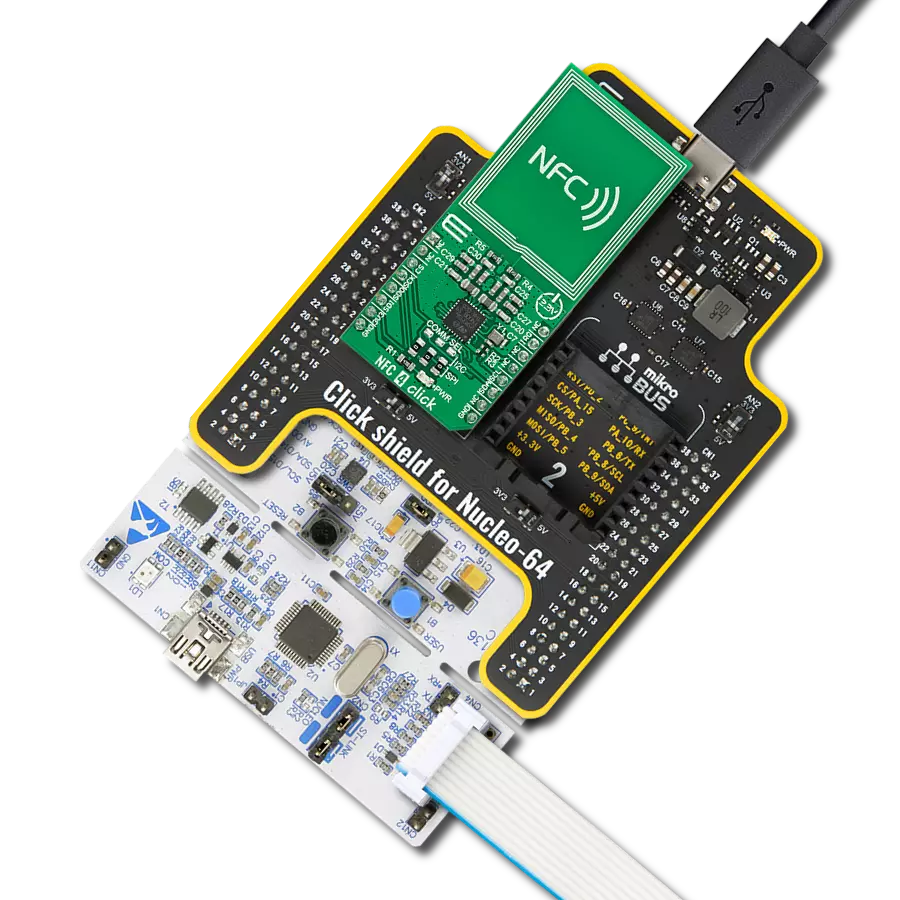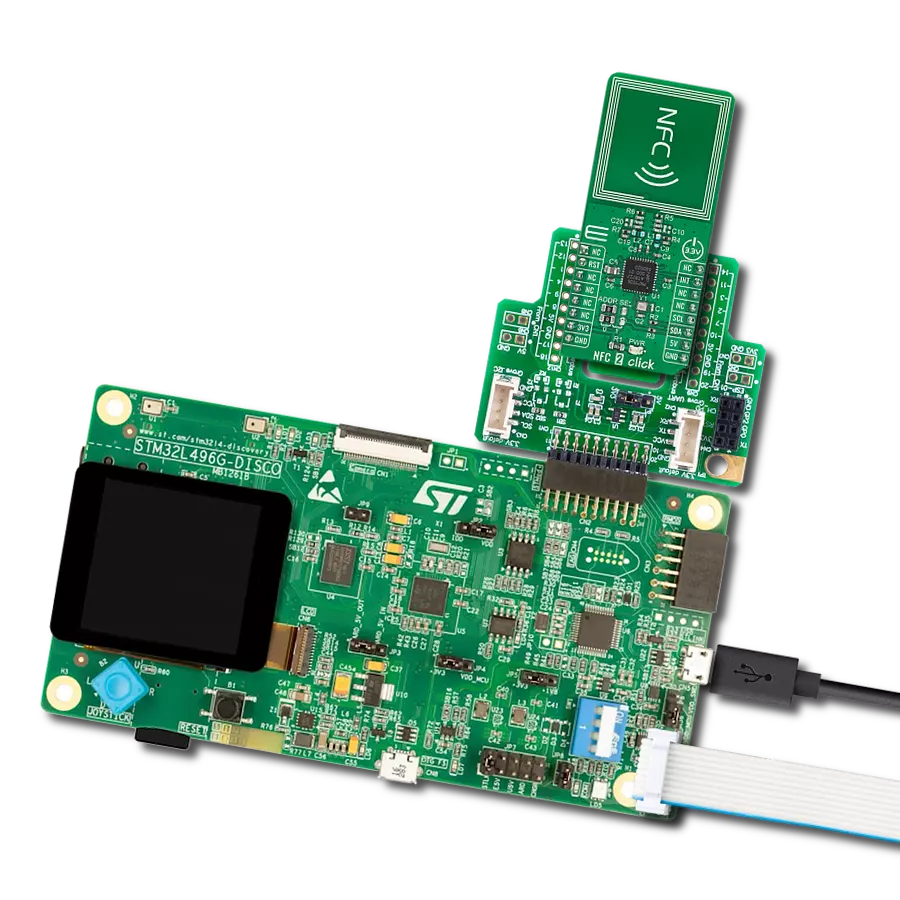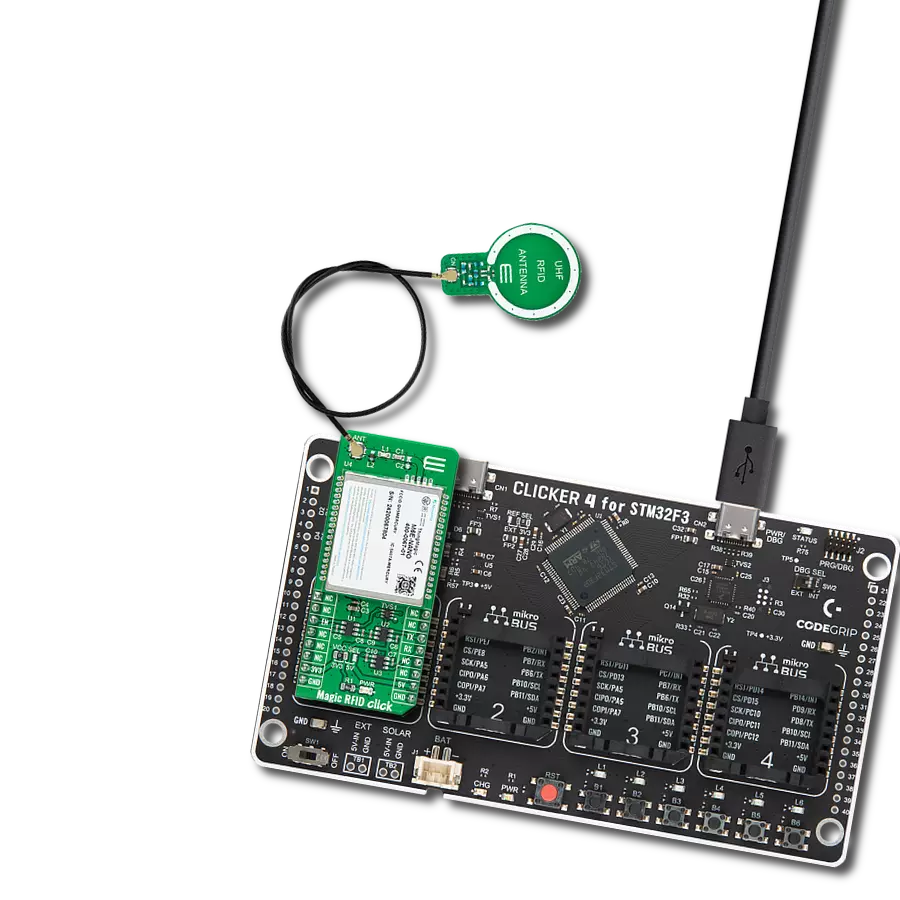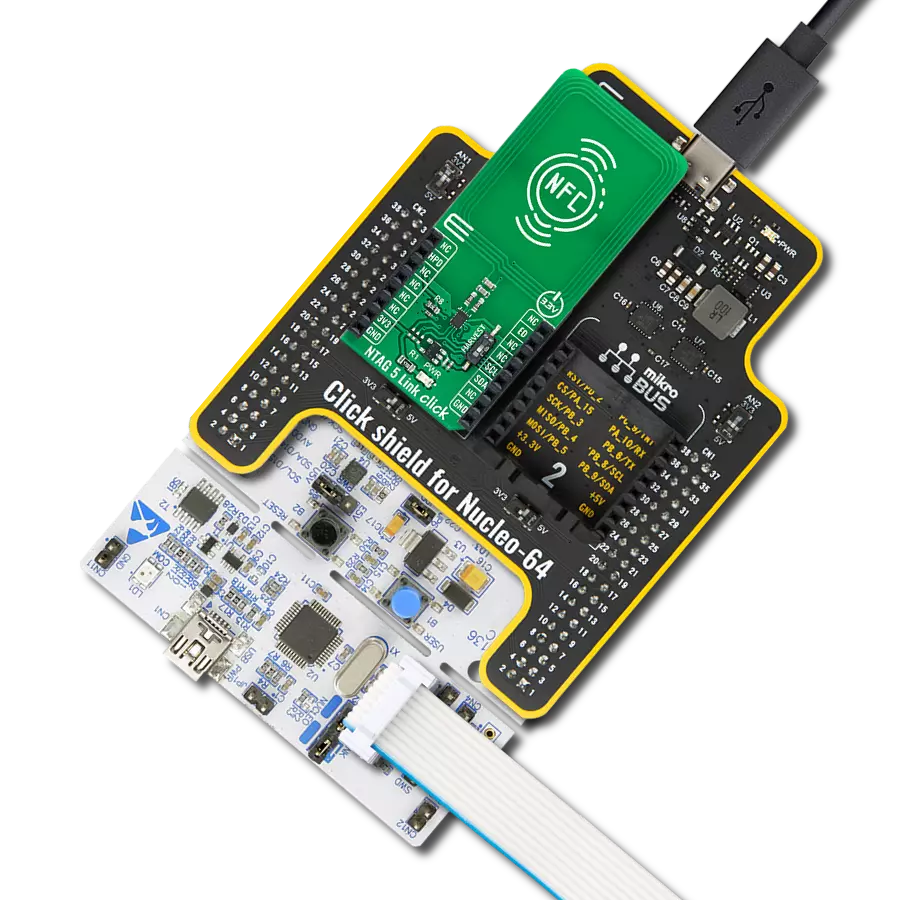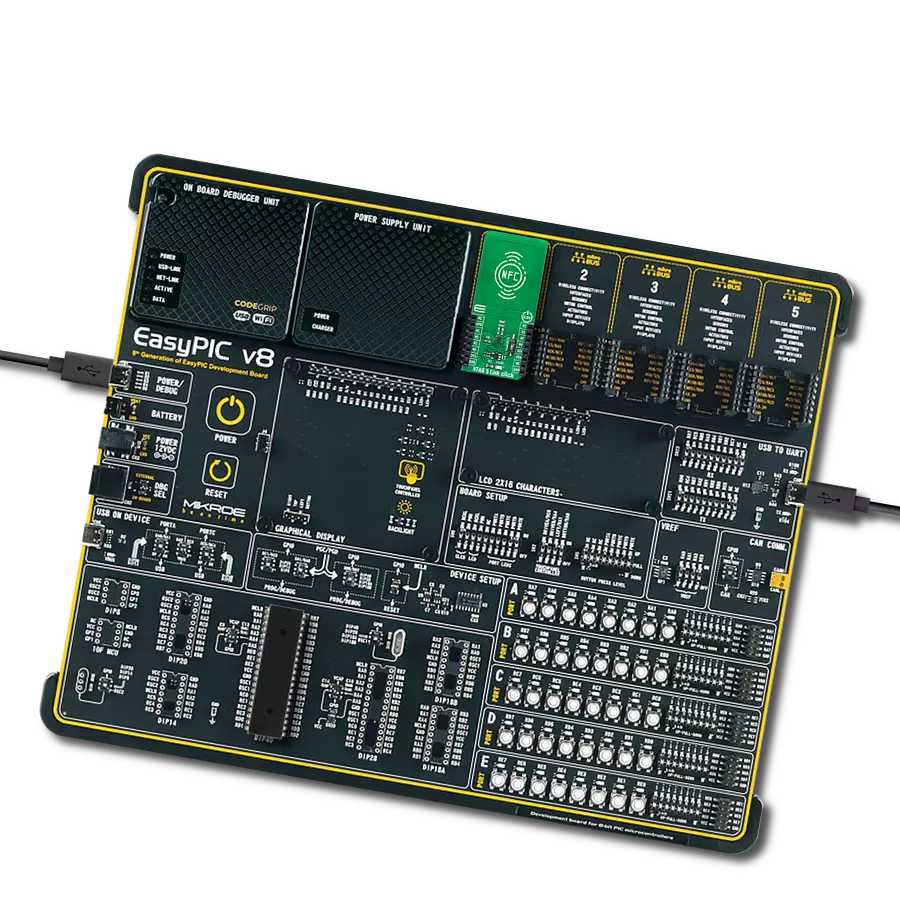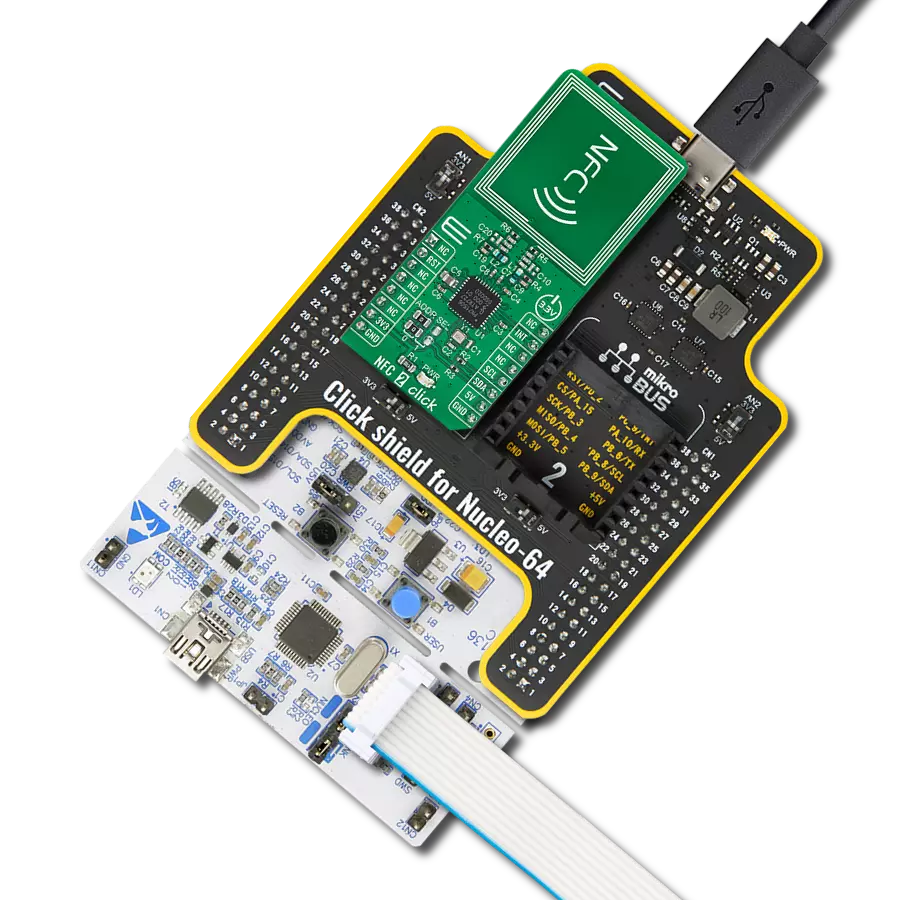Fast and efficient NFC communication is just a Click away!
A
A
Hardware Overview
How does it work?
NFC 5 Click is based on the ST25R3918, a multipurpose NFC transceiver from STMicroelectronics that enables NFC reader capabilities, passive peer-to-peer functions, and NFC card emulation. This component is designed to meet the needs of Internet of Things (IoT) applications and various consumer or industrial uses, providing outstanding analog performance. The ST25R3918 chip is adept for many NFC and HF RFID tasks, including applications in consumer electronics, IoT for accessory recognition, parameter adjustments, brand security, access management, customer engagement, and more. It complies with ISO14443 and ISO15693 standards, facilitating various NFC functions such as accessory recognition, brand protection, and consumer interaction, alongside supporting NFC Forum Tag types 1, 2, 4, and 5 in reader mode.
Thanks to its noise-reduction receiver technology, the chip stands out for its excellent read range with minimal power output, even in challenging conditions. It incorporates an advanced analog front end (AFE) and a comprehensive data framing system for NFC-A/B (ISO 14443A/B) readers, offering higher bit rates, and supports NFC-V (ISO 15693) reading up to 53 kbps. Additionally, it facilitates ISO 18092 passive initiation and targeting, along with NFC-A / NFC-F card emulation, enhancing device interaction with Android™ phones and enabling the use of Apple® App Clips through simple NDEF data exchanges. The ST25R3918 also features a low-power wake-up mode that detects cards by measuring the antenna signal's amplitude or phase, coupled with a low-power RC oscillator and wake-up timer that activates the device at set intervals to search for
tags. NFC 5 Click offers flexibility through its support for both SPI and I2C interfaces, selectable via the COMM SEL jumpers. By default, the I2C interface is active, supporting High-speed mode operation up to 3.4MHz, whereas the SPI mode accommodates clock frequencies up to 10MHz. To notify the host MCU of completed commands or external events, like the peer device field, the ST25R3918 signals an interrupt on the IRQ pin. The ST25R3918 has separated power and logic supply pins, and thanks to two onboard jumpers, labeled VCC and VIO, this Click board™ can operate with either 3.3V or 5V power/logic voltage levels. This way, both 3.3V and 5V capable MCUs can use the communication lines properly. Also, this Click board™ comes equipped with a library containing easy-to-use functions and an example code that can be used for further development.
Features overview
Development board
Arduino UNO is a versatile microcontroller board built around the ATmega328P chip. It offers extensive connectivity options for various projects, featuring 14 digital input/output pins, six of which are PWM-capable, along with six analog inputs. Its core components include a 16MHz ceramic resonator, a USB connection, a power jack, an
ICSP header, and a reset button, providing everything necessary to power and program the board. The Uno is ready to go, whether connected to a computer via USB or powered by an AC-to-DC adapter or battery. As the first USB Arduino board, it serves as the benchmark for the Arduino platform, with "Uno" symbolizing its status as the
first in a series. This name choice, meaning "one" in Italian, commemorates the launch of Arduino Software (IDE) 1.0. Initially introduced alongside version 1.0 of the Arduino Software (IDE), the Uno has since become the foundational model for subsequent Arduino releases, embodying the platform's evolution.
Microcontroller Overview
MCU Card / MCU
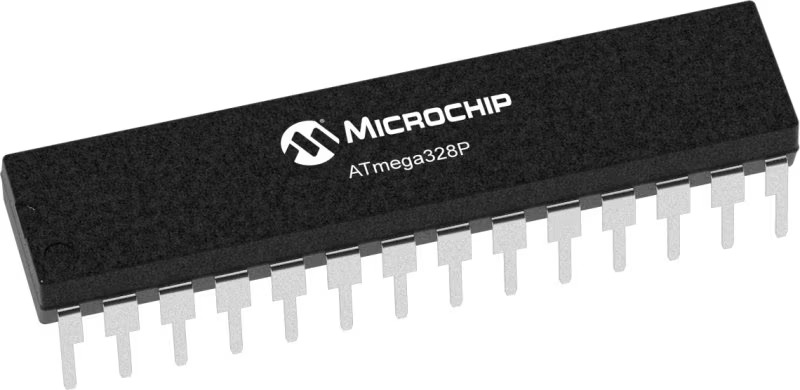
Architecture
AVR
MCU Memory (KB)
32
Silicon Vendor
Microchip
Pin count
28
RAM (Bytes)
2048
You complete me!
Accessories
Click Shield for Arduino UNO has two proprietary mikroBUS™ sockets, allowing all the Click board™ devices to be interfaced with the Arduino UNO board without effort. The Arduino Uno, a microcontroller board based on the ATmega328P, provides an affordable and flexible way for users to try out new concepts and build prototypes with the ATmega328P microcontroller from various combinations of performance, power consumption, and features. The Arduino Uno has 14 digital input/output pins (of which six can be used as PWM outputs), six analog inputs, a 16 MHz ceramic resonator (CSTCE16M0V53-R0), a USB connection, a power jack, an ICSP header, and reset button. Most of the ATmega328P microcontroller pins are brought to the IO pins on the left and right edge of the board, which are then connected to two existing mikroBUS™ sockets. This Click Shield also has several switches that perform functions such as selecting the logic levels of analog signals on mikroBUS™ sockets and selecting logic voltage levels of the mikroBUS™ sockets themselves. Besides, the user is offered the possibility of using any Click board™ with the help of existing bidirectional level-shifting voltage translators, regardless of whether the Click board™ operates at a 3.3V or 5V logic voltage level. Once you connect the Arduino UNO board with our Click Shield for Arduino UNO, you can access hundreds of Click boards™, working with 3.3V or 5V logic voltage levels.
RFID tag operating at 13.56MHz adheres to the ISO14443-A standard, ensuring high-frequency communication. This proximity card technology, often exemplified by MIFARE cards, facilitates secure and contactless interactions in applications like access control, public transport, and payment systems. The ISO14443-A standard defines the communication protocol, incorporating anti-collision mechanisms for simultaneous card handling. These RFID tags possess variable memory capacities, ranging from a few bytes to kilobytes, catering to diverse application needs. Ensuring data security, the standard integrates features such as encryption and authentication. These tags, exemplified by MIFARE technology, are widely used for their efficiency and are vital in enhancing convenience and security in diverse identification and access scenarios.
Used MCU Pins
mikroBUS™ mapper
Take a closer look
Click board™ Schematic
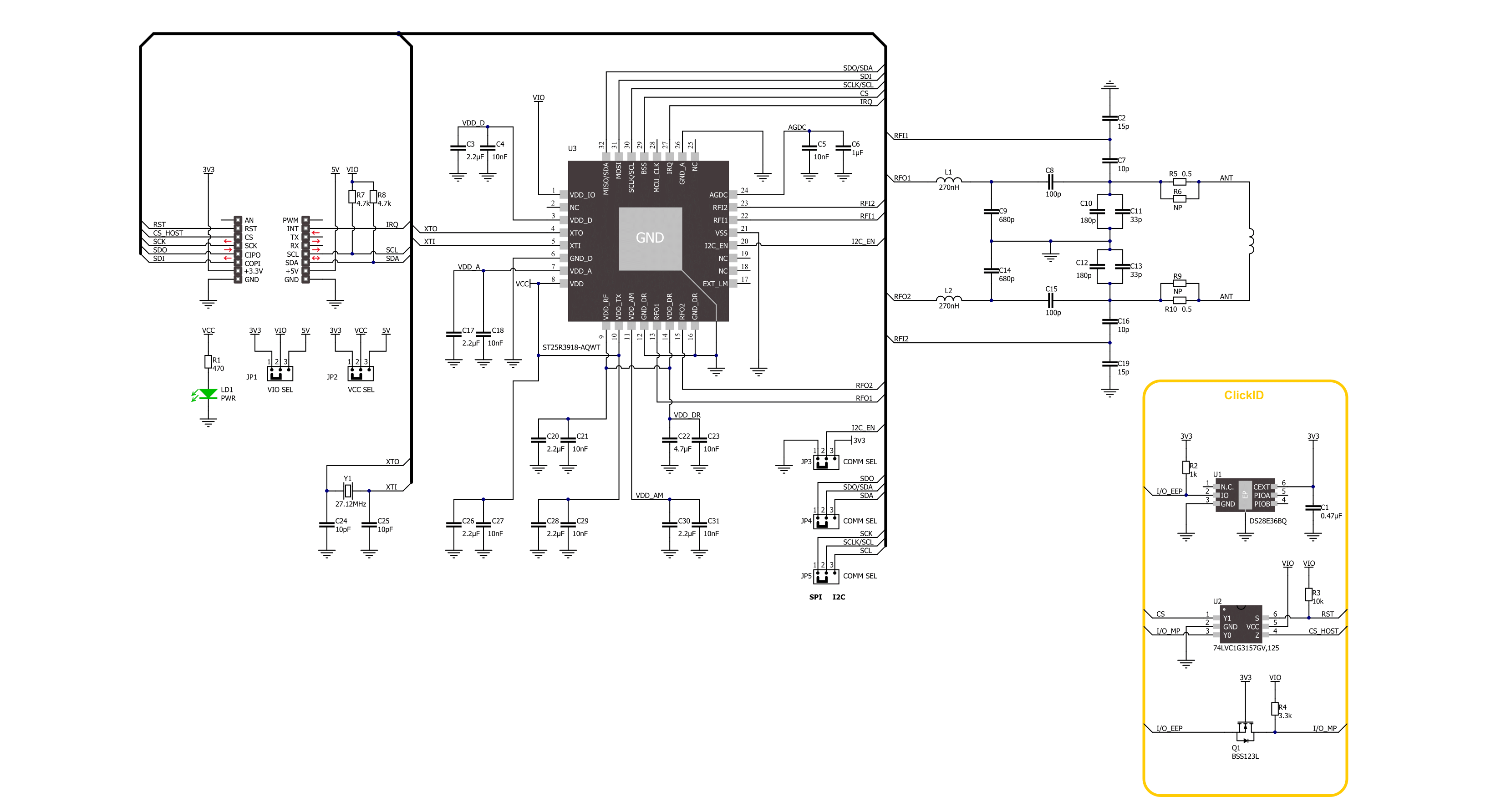
Step by step
Project assembly
Track your results in real time
Application Output
1. Application Output - In Debug mode, the 'Application Output' window enables real-time data monitoring, offering direct insight into execution results. Ensure proper data display by configuring the environment correctly using the provided tutorial.

2. UART Terminal - Use the UART Terminal to monitor data transmission via a USB to UART converter, allowing direct communication between the Click board™ and your development system. Configure the baud rate and other serial settings according to your project's requirements to ensure proper functionality. For step-by-step setup instructions, refer to the provided tutorial.

3. Plot Output - The Plot feature offers a powerful way to visualize real-time sensor data, enabling trend analysis, debugging, and comparison of multiple data points. To set it up correctly, follow the provided tutorial, which includes a step-by-step example of using the Plot feature to display Click board™ readings. To use the Plot feature in your code, use the function: plot(*insert_graph_name*, variable_name);. This is a general format, and it is up to the user to replace 'insert_graph_name' with the actual graph name and 'variable_name' with the parameter to be displayed.

Software Support
Library Description
This library contains API for NFC 5 Click driver.
Key functions:
nfc5_get_mifare_tag_uid- This function reads the UID of a mifare tagnfc5_write_reg- This function writes a desired data to the selected registernfc5_read_reg- This function reads a desired data from the selected register
Open Source
Code example
The complete application code and a ready-to-use project are available through the NECTO Studio Package Manager for direct installation in the NECTO Studio. The application code can also be found on the MIKROE GitHub account.
/*!
* @file main.c
* @brief NFC 5 Click example
*
* # Description
* This example demonstrates the use of NFC 4 Click board by reading
* MIFARE ISO/IEC 14443 type A tag UID.
*
* The demo application is composed of two sections :
*
* ## Application Init
* Initializes the driver and performs the Click default configuration.
*
* ## Application Task
* If there's a tag detected, it reads its UID and displays it on the USB UART every 500ms.
*
* @note
* Only ISO14443-A type tags are compatible with this example.
* We recommend MIKROE-1475 - an RFiD tag 13.56MHz compliant with ISO14443-A standard.
*
* @author Stefan Filipovic
*
*/
#include "board.h"
#include "log.h"
#include "nfc5.h"
static nfc5_t nfc5;
static log_t logger;
void application_init ( void )
{
log_cfg_t log_cfg; /**< Logger config object. */
nfc5_cfg_t nfc5_cfg; /**< Click config object. */
/**
* Logger initialization.
* Default baud rate: 115200
* Default log level: LOG_LEVEL_DEBUG
* @note If USB_UART_RX and USB_UART_TX
* are defined as HAL_PIN_NC, you will
* need to define them manually for log to work.
* See @b LOG_MAP_USB_UART macro definition for detailed explanation.
*/
LOG_MAP_USB_UART( log_cfg );
log_init( &logger, &log_cfg );
log_info( &logger, " Application Init " );
// Click initialization.
nfc5_cfg_setup( &nfc5_cfg );
NFC5_MAP_MIKROBUS( nfc5_cfg, MIKROBUS_1 );
err_t init_flag = nfc5_init( &nfc5, &nfc5_cfg );
if ( ( I2C_MASTER_ERROR == init_flag ) || ( SPI_MASTER_ERROR == init_flag ) )
{
log_error( &logger, " Communication init." );
for ( ; ; );
}
if ( NFC5_ERROR == nfc5_default_cfg ( &nfc5 ) )
{
log_error( &logger, " Default configuration." );
for ( ; ; );
}
log_info( &logger, " Application Task " );
}
void application_task ( void )
{
uint8_t tag_uid[ NFC5_NFCA_CASCADE_3_UID_LEN ] = { 0 };
uint8_t tag_uid_len = 0;
if ( NFC5_OK == nfc5_get_mifare_tag_uid( &nfc5, tag_uid, &tag_uid_len ) )
{
log_printf( &logger, " TAG UID: " );
for ( uint8_t cnt = 0; cnt < tag_uid_len; cnt++ )
{
log_printf( &logger, "0x%.2X ", ( uint16_t ) tag_uid[ cnt ] );
}
log_printf( &logger, "\r\n----------------------------------\r\n" );
Delay_ms ( 500 );
}
}
int main ( void )
{
/* Do not remove this line or clock might not be set correctly. */
#ifdef PREINIT_SUPPORTED
preinit();
#endif
application_init( );
for ( ; ; )
{
application_task( );
}
return 0;
}
// ------------------------------------------------------------------------ END
Additional Support
Resources
Category:RFID/NFC
